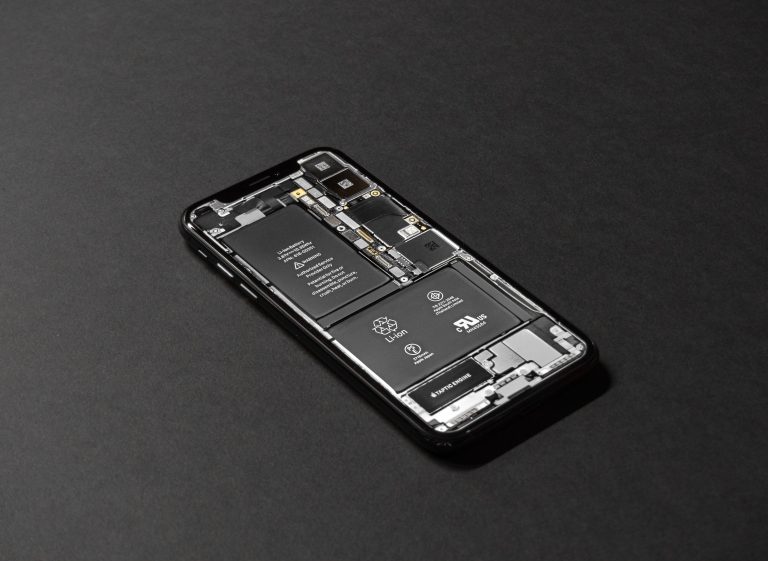Can A Dead EBike Battery Be Repaired?
Are you tired of your eBike battery losing its charge and rendering your rides less enjoyable? Well, the good news is that there may be hope for your dead eBike battery yet! In this article, we will explore the possibility of repairing a dead eBike battery and bringing it back to life. So, put on your helmet, grab a cup of coffee, and let’s find out if your eBike battery can be revived!

Understanding eBike Batteries
eBike batteries are an essential component of electric bicycles, providing power to the motor and determining the range and performance of the bike. It is important to understand the different types of eBike batteries and the factors that can contribute to their deterioration or death. By familiarizing yourself with these key aspects, you can determine whether your dead eBike battery can be repaired or if it needs to be replaced.
Types of eBike Batteries
There are various types of eBike batteries available in the market, each with its own set of advantages and disadvantages. The most common types include:
-
Lithium-ion (Li-ion) Batteries: These are the most popular and widely used batteries due to their high energy density, lightweight, and long lifespan. Li-ion batteries are known for their excellent performance and can be found in many eBikes.
-
Lead-Acid Batteries: Although heavy and bulky, lead-acid batteries are more affordable than Li-ion batteries. However, they have a shorter lifespan and lower energy density, which can result in reduced range and performance.
-
Nickel-Cadmium (NiCd) Batteries: NiCd batteries are less common these days due to their high toxicity and low energy density compared to Li-ion batteries. They have a limited lifespan and require careful maintenance.
-
Nickel-Metal Hydride (NiMH) Batteries: NiMH batteries offer higher energy density and longer lifespan than NiCd batteries. However, they still fall short compared to Li-ion batteries in terms of energy storage capacity.
Understanding the type of battery in your eBike is crucial as it affects the repair options available to you.
Causes of Battery Death
eBike batteries can die or fail due to a variety of factors. Some common causes of battery death include:
-
Age: Over time, eBike batteries lose their capacity to hold a charge and eventually become less effective. The chemical reactions within the battery degrade, resulting in reduced performance and ultimately, battery death.
-
Overcharging or Over-Discharging: Charging an eBike battery beyond its recommended capacity or fully discharging it can lead to irreversible damage. Overcharging can cause thermal runaway, while over-discharging can lead to cell plating, reducing the battery’s lifespan.
-
Excessive Heat or Cold: Extreme temperatures can have a detrimental effect on eBike batteries, causing them to degrade more rapidly. High temperatures increase the internal resistance of the battery, leading to a reduced capacity and premature failure.
-
Manufacturing Defects: Occasionally, eBike batteries may have manufacturing defects that can result in premature failure or a decreased lifespan. These defects can include faulty cells, poor wiring, or defective battery management systems (BMS).
Understanding these causes of battery death can help you determine the likelihood of repair and guide you in taking preventive measures to prolong your eBike battery’s lifespan.
Signs of a Dead eBike Battery
Before exploring the options for repairing a dead eBike battery, it is important to identify the signs that indicate your battery is no longer functioning as intended. Here are some common signs of a dead eBike battery:
Sudden Power Cut-offs
If your eBike experiences sudden and unexpected power cut-offs, it may be a sign of a dead battery. The power cuts could occur even when the battery is fully charged or after a short period of use. This abrupt loss of power indicates that your battery is no longer able to sustain the required voltage.
Reduced Range
A dead eBike battery often exhibits a significantly reduced range compared to when it was new. If you find yourself needing to recharge or replace the battery more frequently, or if the eBike struggles to maintain speed, it may be an indication that the battery is nearing the end of its lifespan.
Failed Recharging
If your eBike battery fails to charge completely or struggles to hold a charge even after a full charging cycle, it could be a sign that the battery has reached the end of its usable life. This could be due to damaged cells or a faulty battery management system.
Identifying these signs of a dead eBike battery can help you assess the extent of the damage and determine whether it can be repaired or if a replacement is necessary.
Determining the Extent of Damage
Once you’ve identified the signs of a dead eBike battery, the next step is to determine the extent of the damage. This can be done through visual inspection, testing voltages, and using diagnostic tools.
Visual Inspection
Begin by visually inspecting the battery for any visible damage, such as physical deformities, corrosion, or loose connections. Check the wiring and connectors for any signs of wear or damage. If you notice any abnormalities, such as melted wires or swollen cells, it is likely an indication of advanced battery degradation.
Testing Voltages
Using a multimeter, you can measure the voltage of your eBike battery to gauge its health. Fully charged Li-ion batteries should have a voltage reading between 3.6 to 4.2 volts per cell. Lead-acid batteries, on the other hand, should read around 12.6 volts when fully charged.
If the voltage readings are significantly lower than the expected values, it suggests that your battery has lost its capacity and may need repair or replacement.
Using Diagnostic Tools
For a more accurate assessment, you can use diagnostic tools specifically designed for eBike battery testing. These tools can provide detailed information about the battery’s state of health, internal resistance, and cell performance. They can help identify specific issues such as faulty cells or a defective BMS.
By utilizing visual inspection, voltage testing, and diagnostic tools, you can gain a better understanding of the extent of damage to your dead eBike battery and determine the next steps for repair.
Common Repairable Battery Issues
Not all dead eBike batteries are beyond repair. In fact, there are several common battery issues that can be fixed, allowing you to extend the lifespan of your battery and save money. Some of these repairable battery issues include:
Damaged Wiring
Wiring damage is a common issue in eBike batteries, particularly if the battery pack has been subjected to physical stress or moisture. Damaged wires can result in reduced battery performance or power interruptions. Repairing or replacing faulty wiring can restore your battery’s functionality.
Faulty Cells
In larger battery packs, it is not uncommon for individual cells to fail while the rest of the cells remain functional. Identifying and replacing the faulty cells can bring your battery back to life. Cell replacement can be a complex process, requiring proper knowledge and skill to ensure the cells are properly balanced and integrated with the battery pack.
Defective BMS
A faulty or malfunctioning Battery Management System (BMS) can also contribute to a dead eBike battery. The BMS is responsible for monitoring and protecting the battery’s performance by regulating voltage, current, and temperature. Repairing or replacing a defective BMS can restore the battery’s functionality and prevent further damage.
Disconnected Connectors
Loose or disconnected connectors can lead to power interruptions and battery failures. Ensuring that all connectors are securely connected and in good condition can often resolve issues with a dead eBike battery. Reconnecting or replacing disconnected connectors is a relatively simple repair that can save you from replacing the entire battery.
By addressing common repairable battery issues such as damaged wiring, faulty cells, defective BMS, and disconnected connectors, you can potentially revive your dead eBike battery and avoid the cost of a full replacement.

DIY eBike Battery Repairs
If you are comfortable with DIY projects and have some technical knowledge, you can attempt to repair your dead eBike battery yourself. However, it is important to approach DIY repairs with caution and ensure your safety. Here are some common DIY repair options for eBike batteries:
Replacing Faulty Wiring
If you have identified damaged or faulty wiring as the issue, you can replace the damaged wires with new ones. This repair may require soldering skills and knowledge of electrical circuits. Proper insulation and secure connections are crucial to ensure the repaired wiring functions reliably.
Cell Replacement
If you have determined that faulty cells are the cause of your dead eBike battery, you can replace the faulty cells with new ones. This process requires careful attention to cell compatibility and proper cell balancing to maintain the performance and lifespan of the battery pack. Cell replacement should only be attempted by those with sufficient knowledge and experience in handling battery cells.
BMS Repair or Replacement
If you suspect the BMS is causing the battery failure, you can attempt to repair or replace it. This repair may involve soldering and programming skills, as well as a good understanding of BMS functionality. It is essential to ensure the replacement BMS is compatible with your battery pack and properly calibrated for optimal performance.
Reconnecting Disconnected Connectors
If loose or disconnected connectors are preventing your eBike battery from functioning properly, you can reestablish the connections by reconnecting or replacing the connectors. This repair generally involves simple plug-and-play procedures and does not require advanced technical skills.
Before embarking on any DIY eBike battery repairs, make sure you have the necessary tools, safety equipment, and knowledge to handle the repairs safely and effectively. If you are unfamiliar or uncomfortable with any aspect of the repair process, it is best to seek professional assistance.
Professional eBike Battery Repair Services
For those who prefer to leave the repairs to the professionals or who have more complex repair needs, there are various eBike battery repair centers that specialize in restoring dead or malfunctioning batteries. Engaging the services of a reliable repair center can provide peace of mind and ensure your battery is repaired to the highest standards. Here are some considerations when choosing a professional eBike battery repair service:
Finding a Reliable Repair Center
Take the time to research and find a reputable and reliable eBike battery repair center. Look for reviews, testimonials, and recommendations from other eBike owners who have used their services. A reliable repair center will have experienced technicians who are knowledgeable about eBike battery repair and can provide quality service.
Cost of Professional Repairs
Consider the cost of professional eBike battery repairs compared to the cost of replacement. While repairs may be more affordable initially, they do not always provide a long-term solution. Evaluate the cost-effectiveness of repairs based on the extent of the damage and the remaining lifespan of the battery.
Warranty and Guarantee
Inquire about the warranty and guarantee provided by the repair center. A reputable repair center will offer a warranty period for their repairs, which gives you assurance that the repaired battery will function as intended.
Recommended Repair Centers
It can be helpful to seek recommendations from eBike manufacturers or local eBike dealers as they may have preferred repair centers or authorized repair facilities. These repair centers often have access to original replacement parts and specialized tools, ensuring the highest quality repairs.
By choosing a professional eBike battery repair service that meets your needs and requirements, you can have confidence in the repair process and the performance of your repaired battery.

Considerations Before Repairing
Before deciding to repair your dead eBike battery, there are several factors to consider that can help inform your decision-making process:
Age and Condition of the Battery
Evaluate the age and overall condition of the battery. Older batteries that have already undergone significant degradation may have limited potential for successful repair. It’s important to weigh the potential benefits of repairing an older battery against the cost and long-term viability of the repair.
Cost of Repair versus Replacement
Compare the cost of repairing the dead battery to the cost of purchasing a new one. Consider not only the direct financial cost but also the value of your time and effort invested in the repair process. If the repair cost is close to or exceeds the cost of a new battery, it may be more sensible to opt for a replacement.
Availability of Replacement Parts
Consider the availability of replacement parts for your specific eBike battery. Some older or less common battery models may have limited replacement options, making repair less feasible. Assess the availability of compatible replacement parts and factor this into your decision-making process.
Warranty Implications
Review the warranty of the eBike battery before proceeding with repairs. Repairs conducted by unauthorized individuals or repair centers may void the warranty. If your battery is still under warranty, contact the manufacturer or an authorized repair facility to determine the best course of action.
By carefully considering the age, condition, cost, availability of replacement parts, and warranty implications, you can make an informed decision about whether to repair your dead eBike battery or opt for a replacement.
Preventive Maintenance for eBike Batteries
Taking proactive measures to maintain your eBike battery can help prevent premature deterioration and extend its lifespan. Here are some key practices to incorporate into your preventive maintenance routine:
Charging and Discharging Practices
Follow the manufacturer’s recommendations for charging and discharging your eBike battery. Avoid overcharging or fully discharging the battery, as these practices can accelerate battery degradation. Regularly recharge your battery after each ride and avoid leaving it in a discharged state for prolonged periods.
Proper Storage
When not in use, store your eBike battery in a cool, dry, and well-ventilated area. Avoid exposing it to extreme temperatures, direct sunlight, or moisture. Storing the battery at an optimal temperature range can help preserve its capacity and prevent premature aging.
Regular Inspections
Perform regular visual inspections of your eBike battery to check for any signs of damage or wear. Pay attention to the wiring, connectors, and physical condition of the battery. Detecting potential issues early on can help prevent further damage and allow for timely repairs.
Cleaning and Protection
Keeping your eBike battery clean and protected can contribute to its longevity. Wipe down the battery regularly with a soft cloth to remove dirt, debris, and moisture. Apply a thin layer of protective coating to the battery casing to safeguard it against scratches and corrosion.
Incorporating these preventive maintenance practices into your routine can help maximize the lifespan and performance of your eBike battery, reducing the likelihood of a dead battery and the need for repair.

When to Replace Instead of Repair
While repairs can be a cost-effective solution in many cases, there are situations when replacing a dead eBike battery is a more viable option. Here are some scenarios where replacement may be the preferred choice:
Extensive Battery Damage
If the extent of the damage to your eBike battery is severe, such as melted cells or irreversible internal damage, repair may not be feasible. Extensive damage can compromise the overall performance and safety of the battery, making replacement necessary.
Obsolete Technology
If your eBike battery is based on outdated or obsolete technology, finding replacement parts and repairing it may be challenging or impossible. Upgrading to a new battery with the latest technology can enhance the performance and longevity of your eBike.
Unavailability of Replacement Parts
In some cases, replacement parts for older or less common eBike batteries may not be readily available. If sourcing the necessary components proves difficult or expensive, it may be more practical to invest in a new battery that offers better compatibility and long-term support.
Cost-Effective Replacement Options
Consider the cost-effectiveness of repairs versus replacement. If the cost of repair is significantly higher than buying a new battery with better performance and warranty coverage, it may be more sensible to opt for a replacement.
Conclusion
Repairing a dead eBike battery is possible in many cases, thanks to advancements in battery technology and repair techniques. By identifying the signs of a dead battery, determining the extent of damage, and considering repair options, you can prolong the life of your eBike battery and save money. Whether you choose to embark on a DIY repair or seek the assistance of a professional repair center, it is important to prioritize safety and ensure that the repair process aligns with the type and condition of your eBike battery.
Remember, preventive maintenance is key to avoiding dead battery issues. By following charging protocols, proper storage practices, regular inspections, and cleaning routines, you can minimize the likelihood of battery failure and maximize the lifespan of your eBike battery. Ultimately, the decision to repair or replace a dead eBike battery should be based on factors such as the battery’s age, condition, repair costs, availability of replacement parts, and warranty implications. With proper care and timely repairs, your eBike battery can continue to power your adventures for years to come.







